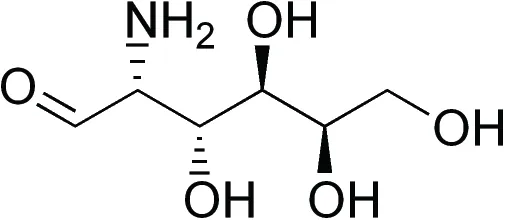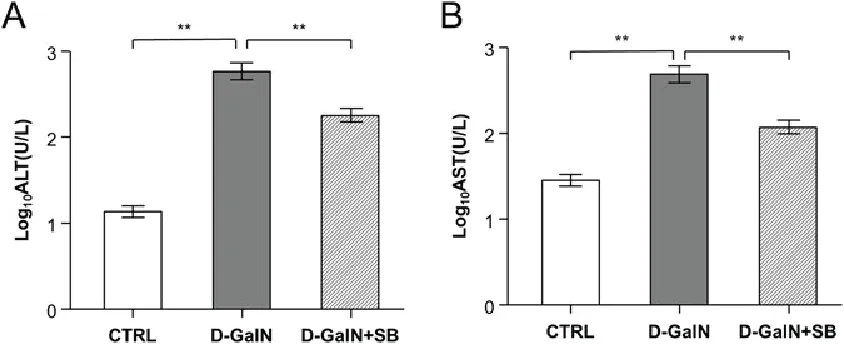The human microbiome is a very active area of scientific research at the moment. It's one of those buzzword topics like CRISPR, that everyone is interested in knowing more about. This is largely due to the fact that we have known about the collection of microorganisms living in our guts for decades, but wrote them off as unimportant to human health. However as of the past decade researchers have come to find that not only are these gut bugs important, but human health is actually quite intertwined with the composition of organisms that are thriving there.[1]
Today we will discuss an article titled "Saccharomyces boulardii Administration Changes Gut Microbiota and Attenuates D-Galactosamine-Induced Liver Injury" which was published May 2nd 2017 in the journal Nature: Scientific Reports.
What Were They Studying?

This article discusses a strain of yeast called Saccharomyces boulardii, a strain which is sold all over the place as a probiotic [4], and its relationship in potentially healing liver damage due to hepatosis, which is a term referring to a disease of the liver that is not caused by inflammation but rather changes to the liver cells themselves.
The researchers were exploring accute liver failure, which is a disorder with an extremely fast and high death rate if and when it occurs.[5] It can be caused by a wide ranging set of things including viral infections and liver injuries due to drugs (drug in this being anything, including pharmaceutical medications). [6, 7]
The way they were modeling acute liver damage in humans, was (of course) through use of a mouse model...

and administration of D-Galactosamine, which is an amino sugar (galactose is the sugar, and amine indicates that there is an NH2, as one hydrogen is replaced by the bond to a sugar carbon) which looks like this:

D-Galactosamine (or D-GalN through out the figures) is known to cause liver injury, so it allows for quick induction of these conditions for studying the effect of the presence of Saccharomyces boulardii in the mouse microbiome.
So What Did They Find?
To look for the effects of liver damage the researchers monitored the blood levels of two liver enzymes: aspartate aminotransferase or (AST) and Serum alanine aminotransferase (ALT). The reason for this, is these two liver enzymes are normally found in very low levels in the blood, however if the liver is damaged, it ends up releasing them into the blood stream. In fact, testing for these enzymes is actually a common medical procedure looking for liver damage in us humans as well.[8]. So the researchers had three groups in the following experiment, a control which didn't receive any D-Galactosamine, a positive control which received D-Galactosamine but did not have the Saccharomyces boulardii (SB in the figure) in its microbiome and finally a mouse group which did.

What we are looking at here in A are the blood levels of ALT in the three groups which I described above. Now when you are looking at that Y axis, notice its in a log scale so each number is equivalent to 10 times the amount of protein as the preceding number. So when you see the D-GalN positive control group is at ~3 this means there is 100 times more of the ALT present then in the control which did not have its liver damaged. You can clearly see that the presence of the Saccharomyces boulardii results in a significant reduction in the amount of ALT present (5-10 fold) indicating that they protected the liver against damage. Looking to the right at figure B we are looking instead at AST, and we can see that the results are paralleled for this second indicator of liver damage.
They also looked at this from another perspective and perhaps it paints the picture a bit better than the bar graph of enzyme levels. Here they are showing what the liver cells looked like for the three groups:

What we are looking at here are light microscope images of liver tissue from each of the three groups. You can see that in the positive control group (B) the liver cells are pretty destroyed looking, but in the sample with the Saccharomyces boulardii (C) they look a lot more like the control group. Pretty cool!
TL;DR
The presence of Saccharomyces boulardii in the microbiome of the mice seem to protect the liver against damage in a pretty significant way. The authors state that these results "merits in-depth pathological and pharmacological study" on Saccharomyces boulardii and their potential use as a treatment for acute liver injury. It's pretty hard to argue with them on that point, hopefully more work can be done.
This article is another small piece in the picture coming into view showing us just how much an effect the composition of the microbiome can have with regards to our health. Studies like this are so very important to building up that understanding, and show the potential for health benefits that will undoubtedly come from further research.
Sources
- http://gut.bmj.com/content/65/2/330
- https://www.nature.com/articles/s41598-017-01271-9
- http://betargin.com.ua/en/zabolevaniya-pecheni/bolezni-pecheni/gepatozyi.html
- https://www.ncbi.nlm.nih.gov/pmc/articles/PMC3296087/
- http://www.clinmed.rcpjournal.org/content/15/5/468
- http://emedicine.medscape.com/article/169814-overview
- http://annals.org/aim/article/715846/results-prospective-study-acute-liver-failure-17-tertiary-care-centers
- http://www.webmd.com/digestive-disorders/alanine-aminotransferase-alt#1
All Non Cited Images Are From Pixabay.com And Are Available Under Creative Commons Licenses
Any Gifs Are From Giphy.com and Are Also Available for Use Under Creative Commons Licences
Images from figures in Nature: Scientific Reports articles are available for reuse under a Creative Commons license.
If you like this work, please consider giving me a follow: @justtryme90. I am here to help spread scientific knowledge and break down primary publications in such a way so as to cut through the jargon and provide you the main conclusions in short (well compared to the original articles at least!) and easy to read posts.